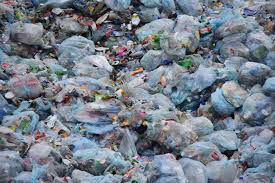The packaging industry faces mounting shareholder and public pressure to reduce the environmental impact of plastic. The recycled plastics market in the United States is positioned for growth, but developing a reliable supply of post-consumer plastics will be costly. Reliance on export markets has limited investment in domestic recycling capacity, local collection programs vary considerably, and many consumers are ignorant about what can and cannot be recycled. The low cost of manufacturing virgin plastics compounds these challenges. In the current issue of ELR—The Environmental Law Reporter, Chantal Carriere and Rachael Beavers Horne argue for legislating a minimum recycled content requirement for the packaging industry.

Carriere and Horne begin with an overview of the current supply chain, an analysis of factors that are driving change in these processes, and a look at challenges with the recycling market and prior solutions. They make clear that “solving the plastic pollution problem requires innovation in recycling processes, and involuntary demand side regulation with market functions would lead to innovation in domestic capacity in the most efficient way possible.”
To that end, the authors propose legislation to introduce a minimum recycled content percentage in new plastic products and require covered entities to submit “recyclable plastics credits” equal to their compliance obligation. Under this model legislation, all brand owners would incorporate a minimum percentage of recycled plastic into their packaging, evidenced by submitting a proportionate amount of credits certified by a designated certification agency. The credits could also be traded for compliance purposes.
In crafting their proposal, Carriere and Horne purposefully set out to mitigate the financial risk of incorporating recycled plastics into feedstocks. Previous demand side policies did not incorporate market solutions, but as the authors explain, “[i]ncorporating a market-trading system will spur investment in recycling technology development and new ways to reuse plastics, increasing domestic recycling capability and thereby creating a thicker market in recycled plastic.” In addition, a guaranteed demand for credits could help stabilize an historically volatile recycling market and allow for investment in domestic recycling.
Although the Article only focuses on one form of plastic product, packaging, the authors’ model legislation is designed to apply more broadly. Assessing the possibilities of passing legislation, they conclude that their proposed model could be adopted by Congress or by state governments, and could be scaled to facilitate incorporating recycled content into other plastic products.
ELI is making this featured ELR article available free for download. To access all that ELR has to offer, including the full content of ELR—The Environmental Law Reporter and its archive, you must have a subscription.
To learn more, visit www.elr.info.
